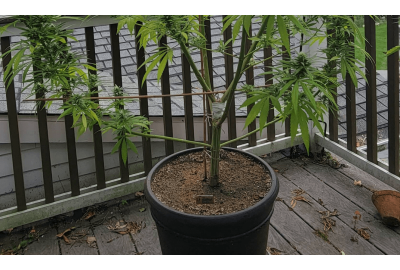Monster Cropping: To Do or Not To Do
Monster cropping is a fascinating, sometimes controversial cultivation technique. The name may sound scary, but it’s not something to fear. It refers to the strange growth patterns of the plant while going through the stress of re-vegging.
It’s a method that involves taking plant cuttings during bloom and then re-introducing the vegetation phase. Monster cropping cannabis may be useful when you need to clone a flowering plant to save its genetics. It’s also fun if you want to see some odd growth patterns.
Continue reading to learn about this unique technique. Discover the pros and cons, how to do it, and the strains that work best.
Let’s get started.

What is monster cropping?
This is a technique involving a mother plant with strong genetic traits. You keep it in the vegetative stage, enabling the practice of cloning cannabis.
This cultivation method lets you preserve the best characteristics of a specific strain. It doesn’t require maintaining the mother plant unless you want to. The clones might grow bushier and have larger canopies with increased branching.
With monster cropping, you take parts of a plant in its early flowering stage. You force the clippings back into the vegetative stage by increasing the light cycle from 12/12 to 18/24 hours.
As they fully revert into a vegetative state, you train the plant using the Screen of Green (ScrOG) method. This technique lets you take advantage of the bushy growth caused by reverting.
After you have a dense canopy, you trigger flowering again by returning the lighting to a 12/12 cycle.
Monster cropping cannabis is best for experienced growers because it’s difficult to perfect. First, you need to become competent at cloning with the traditional method. There’s no difference in the technique, except you take clippings during flowering instead of vegetation.
Why would a grower choose this risky method instead of using normal cloning?
This technique gets its name from the peculiar bushy growth the stressed clones develop. It typically leads to strangely formed leaves and increased branching, but at a cost.
It’s a very stressful process for cannabis, so expect to experience a higher rate of clone death. There’s also generally a much longer window for roots to appear. It doesn’t necessarily strengthen your crop but may result in bushier growth.
How do you choose which plant to use for monster cropping?
When you buy a pack of cannabis seeds, each plant tends to mature slightly differently, even if they’re the same strain. Choose a good quality mother and look for cultivars known for vigorous growth in the vegetative and flowering stages.
Pick photoperiods and avoid slow growers. Using the monster crop technique with clones from high-quality, robust plants gives you the best chance of success.
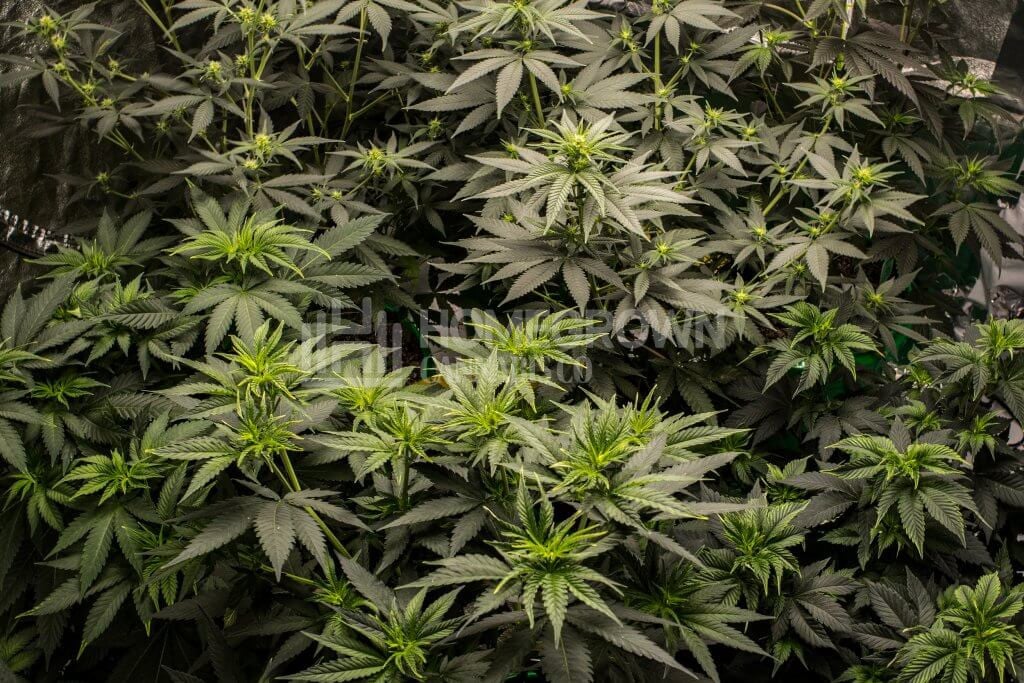
Is monster cropping good?
It’s an excellent way to preserve the genetics of a specific strain. It has limited uses, but it’s beneficial if you don’t keep the mother plant and want to continue its lineage.
Let’s look deeper into the pros and cons of the method.
Monster cropping advantages
- No loss of the mother plant: The original plant continues to flower after you take cuttings. You need to grow the new crop in a separate environment for re-vegging.
It’s best to keep the mother and maintain two different areas to execute the monster crop technique. Doing so essentially gives you extra harvests and doesn’t require sacrificing the original crop.
- Preserve high-quality genetics: Clones have identical genes to the plant you take them from. They have the same resistances, growth traits, and effects, but their appearance may differ because of added stress.
- Bigger growth: Such a plant could produce a denser canopy because of increased branching. Adding stress may affect bud size and reduce yields, but other training techniques could help boost the harvest size.
- Continuous growing cycle: You can create numerous clones and gain perpetual crops. You have a small window to take cuttings 1–3 weeks into flowering. Re-vegging the original plant at harvest time can also continue the growth cycle.
- Use with other growing methods: Pair monster cropping with other growing techniques like pruning, low and high-stress training, and Screen of Green. Combining two or more methods could provide better harvests.
Monster cropping disadvantages
- Only works with photoperiodic crops: Use regular or feminized cannabis seeds to monster crop. You can’t force autoflower plants back into the vegetative stage.
- The success rate isn’t 100%: A lot of stress gets put on the clone. Take clippings from branches and mature them into bushy high-yielding plants. Many clones can’t handle the high stress and may never root. You also risk hermaphroditism.
Treat them like clones from a vegging plant and provide a warm, humid environment. Expect it to take much longer before roots appear. You may also experience a higher rate of loss. Use a seedling dome to maintain optimal conditions.
- Not for beginners: Growing marijuana is becoming a new hobby for many now that many states have legalized cultivating at home. The method is best for those with more experience, as it can be challenging.
- It’s a slow process: You need a lot of patience to employ this technique. It takes weeks and sometimes even months. Clones typically root in 5–7 days, with a 2–4 week vegging period. The time lost from re-vegging may not be worth possible yield gains.
It may be costly: You must also consider the money spent on running lights for those extra weeks or months. You could already be halfway through the flowering process with a standard set of plants.
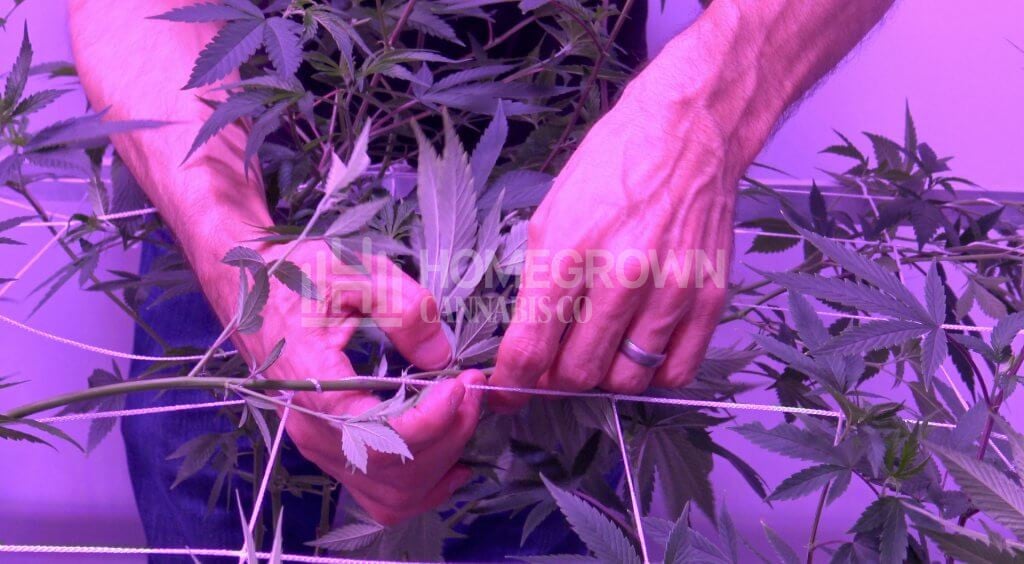
Will monster cropping increase my yield?
The technique becomes more successful as you gain further experience, giving you better results each time.
Once you perfect your skills, it could significantly increase your yields. You get multiple harvests and can continually grow from one plant. That means you could get an indefinite amount of weed from a single crop.
Manipulate the clones to get higher yields from the training method, producing bushy plants with more branches and a higher nug density. Extending the vegetative stage for a few weeks could provide even more buds and a larger canopy.

Monster cropping step by step: how to monster crop your cannabis plants
Now that you know the benefits, follow our monster cropping step-by-step guide for the best results.
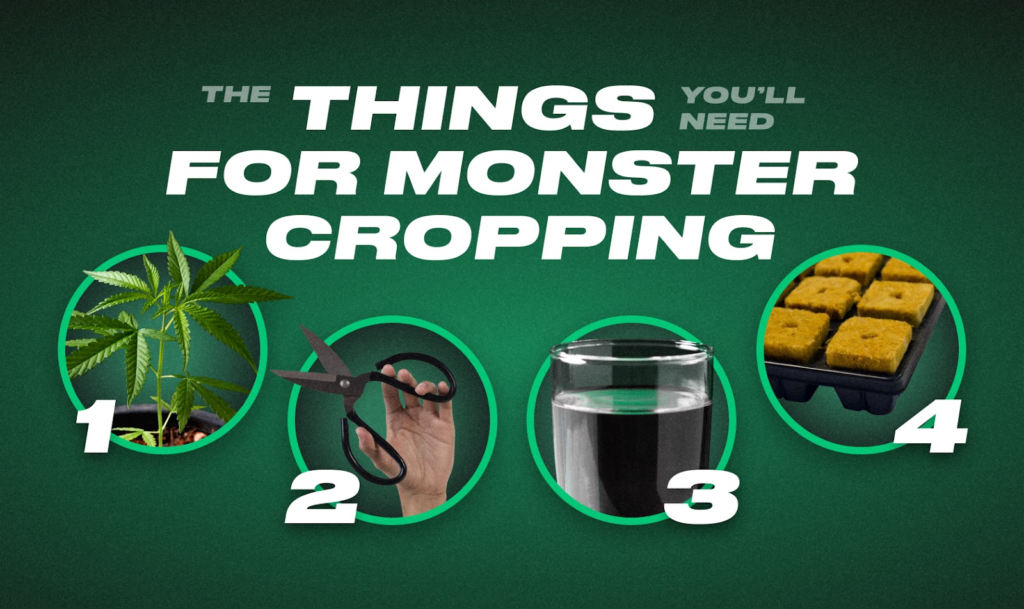
First, gather the materials you’re going to need for the procedure:
- Cannabis seeds that have reached the early flowering stage.
- A sharp and sterilized pair of scissors or knife.
- Glass containers filled with purified water.
- Rockwool cubes or perlite.
Once you have everything together, you’re ready to start monster cropping. Follow these steps:
- Choose the best marijuana strain you have in your grow room. The plant needs to be sturdy, tall, and healthy. Never choose one with signs of illness, weakness, or any concerning features.
- Select one of the lower branches to clip. You don’t want to snip off the upper growth with the largest buds.
- Cut at a 45-degree angle in a swift motion with your sterilized scissors.
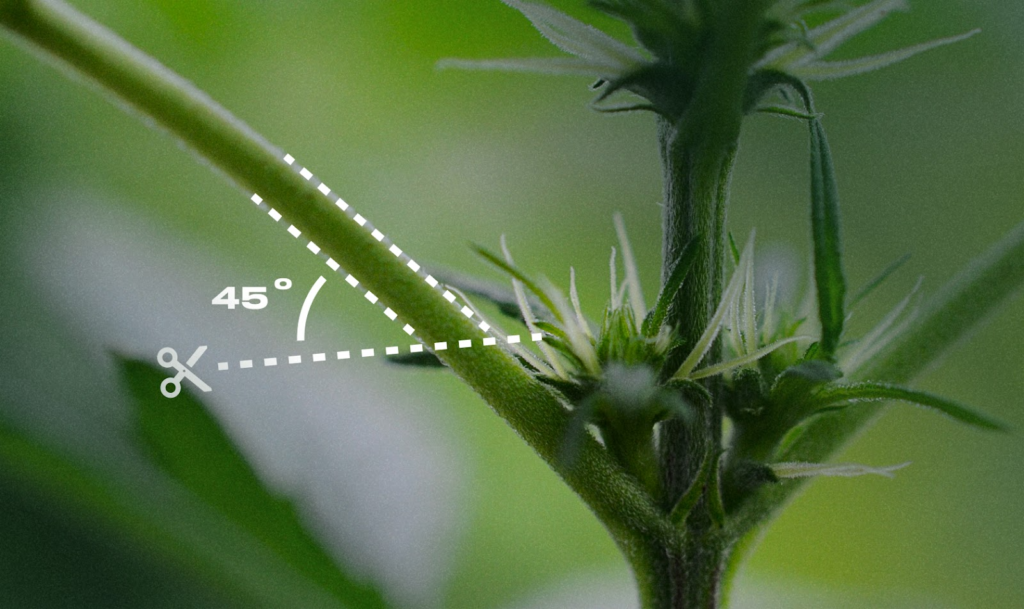
- Place the clipping directly into the glass of purified water.
- Clean your scissors, then continue making more cuts until you have what you want. Disinfect the scissors each time to reduce the risk of disease.
- Leave the monster crop clippings in the containers for around thirty minutes. You want to submerge them for a sufficient period but avoid roots from sprouting in the water. Putting the ends into rooting cubes will destroy the new roots if they form in the liquid.
- Take the clippings out and place them in a medium with rockwool cubes or perlite to promote stronger roots.
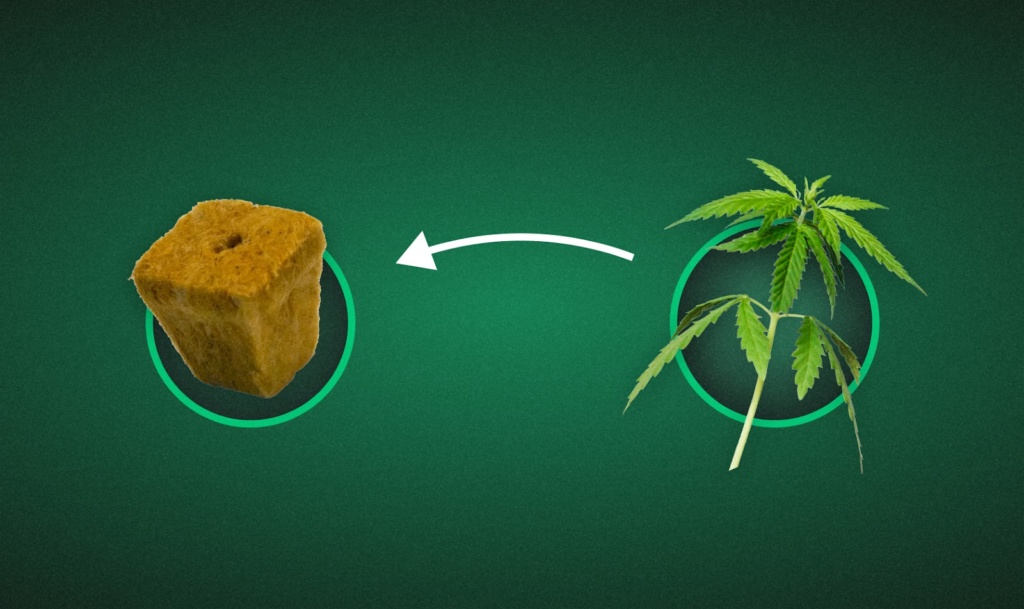
- Once you have matured roots, revert your clippings into the vegetative stage. Do this by adjusting the lighting schedule. Most growers use an 18/6 cycle, but the clones can also handle 24 hours of light.
- Ensure your clippings return to a vegetative state. You know they are when you see new fan leaves develop.
- Cultivate the clones as usual when they start vegetating.
- (Optional) Now it’s time to combine other techniques with monster cropping. Use the Screen of Green method or pruning to help increase your yield.
- (Optional) Repeat these steps when the clones reach the early flowering stage to produce more clippings.
Monster cropping indoor plants
It’s best to use it indoors because the plants need optimal growing conditions. You have more control over the climate of your grow room inside.
Space is the number one problem when growing indoors. One way to help keep your plants at manageable heights is pruning. A Screen of Green setup is also beneficial, and it’s better for monster cropping than the Sea of Green technique.
The Screen of Green method encourages horizontal outward growth. It entails training your plants through a mesh screen or trellis and pulling the branches down before letting them stretch up again.
Do it during vegetation to boost yields and maximize available space. Pruning is also beneficial and entails making minor cuts to the crop. Trim your plants using topping, fimming, or lollipopping techniques.
Monster cropping outdoor plants
Monster cropping outdoors is a bigger challenge. Only do it if you live in a consistently warm climate with long growing seasons and many sunlight hours.
You must re-veg the clones with 18–24 hours of light. There isn’t enough sun during the northern states’ fall and winter, and the days aren’t warm enough.
The process doesn’t differ too much from indoors.
Begin by gathering the same materials and wait until your plant is in the first weeks of flowering. Cut the lower branches, put the clippings into a glass of water, and bring them indoors.
Don’t keep the clones outside, as it’s less likely roots will form. You can control the climate inside to ensure root development. Once your monster-cropped plants are mature enough, it’s time to take them outdoors again.
Place the clones in an area with plenty of sunlight and care for them like other marijuana crops. Your plants will grow into bushy, high-yielders in a few weeks.

What strains work best with monster cropping?
Only use the monster crop technique with regular or feminized strains. It’s impossible to perform with autoflowering seeds because you can’t revert the clones to the vegetative stage.
I recommend using feminized seeds over regular seeds because you don’t have to deal with picking out male plants. Female plants can be stronger and handle high stress, creating better monster cropping clones.
Choose strains with a short flowering time of 8–10 weeks. Indica-dominant ones are best because they usually have a shorter blooming period, so reverting the clones to vegetation is easier.
Shishkaberry Kush feminized seeds produce ideal plants for monster cropping as the specs meet all the basic requirements. It’s indica-dominant, flowers in 8–10 weeks, and has a sturdy photoperiod flowering style. The buds contain 16–21% THC and have a delicious berry taste.
Another great pick to try the method with are plants grown from Lavender feminized seeds. This strain won Best Indica at the 2005 High Times Cannabis Cup. The harvest contains 15–19% THC and has an herbal lavender flavor. It produces a relaxing, euphoric body high.
If cultivating marijuana for medical use, use the monster crop technique for plants grown from CBD Critical Mass feminized seeds. The buds contain 5% THC and 5% CBD levels, potentially relieving some medical conditions. They have a sweet taste with earthy herbal undertones.

Final thoughts on monster cropping
Try this method if you want to challenge yourself with a time-consuming, difficult technique with interesting results.
When done successfully, you could get a high-yielding harvest with increased canopy density, more branches, and bushier foliage. You can create many clones from one plant and maintain the best genetics of the mother plant.
Buy cannabis seeds from Homegrown Cannabis Co. and start monster cropping at home.
FAQs
If you’re still curious about this controversial yet fascinating technique, find answers to the most common questions below. For more growing techniques and tips, check out our blog.
Does monster cropping change genetics?
No, it maintains strain genetics from the mother plant. You take clippings from the original crop and preserve the best characteristics of that cultivar.
When should I start monster cropping?
It’s best to start after about three weeks of flowering. Alternatively, do it 1–3 weeks after switching your plants to a 12/12 lighting cycle.
How long does monster cropping take?
It is a long process requiring much patience. You must wait a few weeks until the crop has flowered for up to three weeks. Re-vegging them then takes an additional 2–4 weeks. The length of time until harvest depends on your chosen strain.
